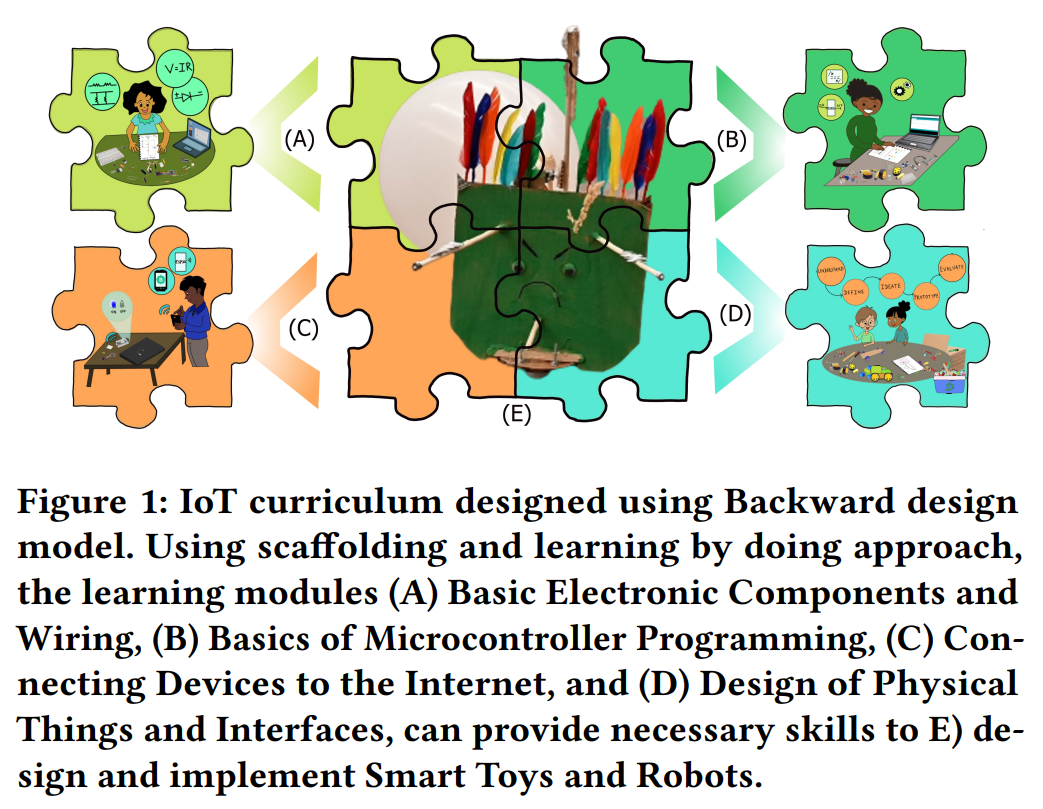Despite the growing demand for experienced Internet of Things (IoT) professionals across industrial establishments, most secondary education institutions do not offer a curriculum to empower students’ knowledge and skills in IoT. Enrichment programs and vocational workshops can be considered as potential solutions to equip students with necessary IoT-related skills and assist them in planning and making conscious career choices. Through this research, we aim to utilize the principles of Backward Design and constructionism in designing an IoT curriculum for enrichment programs for high school students, while incorporating electro-mechanical concepts from electronics, programming, connectivity, and design. The curriculum was used to teach IoT concepts to 28 high school students during two enrichment programs. It was found that students with hardly any prior knowledge in IoT could acquire the necessary skills to design and prototype IoT applications.
Adopting Backward Design into a Constructionist Curriculum Design for IoT Skill Development in High Schoolers
Authors: Ananya Ipsita, Terrell Kendall Glenn, Disha Ajay Bhagwat, Nielsen Pereira, Kylie A Peppler, Karthik Ramani
In Proceedings of the Extended Abstracts of the CHI Conference on Human Factors in Computing Systems, pp. 1-8. 2025.
https://doi.org/10.1145/3706599.3720210


Ananya Ipsita
Ananya Ipsita is a Master's student in the School of Mechanical Engineering at Purdue University since Fall 2018. She received her Bachelor's degree in Electronics and Communication Engineering from National Institute of Technology, Rourkela, India. Prior to joining Purdue, she worked as a software engineer in SAP Labs, India where she designed and developed analytical business solutions. Her research interest includes computer vision, robotic systems, Augmented Reality (AR) and Human-Computer Interaction (HCI).
